This photograph records one brief interlude in the Battle of the Somme, which lasted for over four months in 1916. The men gathered around Captain Gilbert Castle are the survivors of a Gloucestershire regiment: D Company of the 1/4th (City of Bristol) Battalion (Territorial Force), 144th Brigade of the 48th (South Midland) Division. The dates shown on the neatly written placard placed to their front, 17 to 24 July, were ones of frightening intensity for not only these men, but also the thousands of others who formed the British Fourth Army then facing the German forces in the trenches to the north-west of Albert in the Department of the Somme, Hauts-de-France.
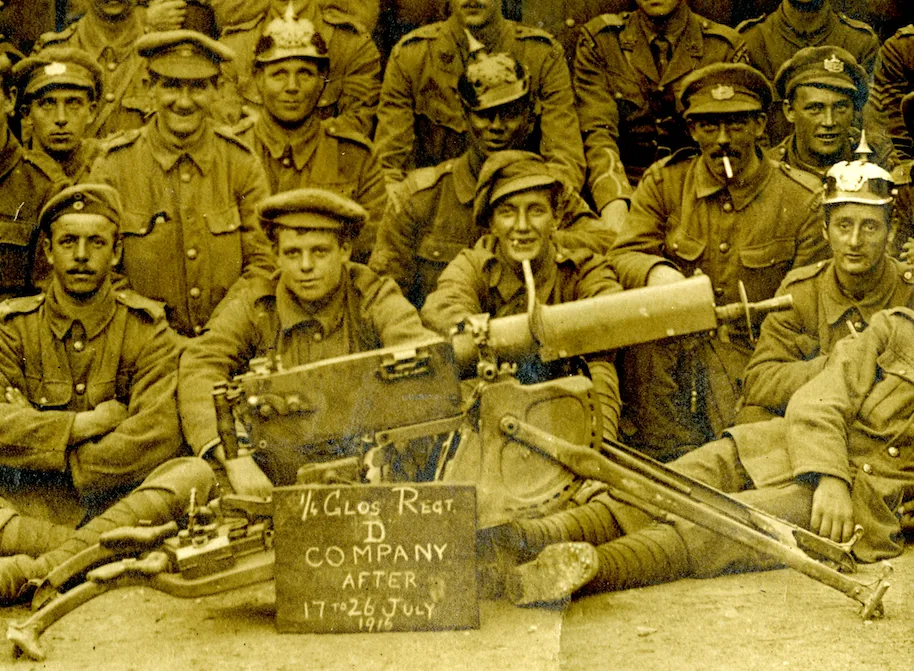
The battalion had been in France since March 1915, employed mainly on quiet sectors of the front-line, engaging in no major actions but taking steady losses nonetheless. However, with the opening of the Somme offensive on 1 July 1916, this was soon to change.
On the opening day of the offensive the battalion was in the Corps of Reserve, and so saved from the suicidal attacks of that first day, but their role was no easy alternative. The War Diary entry for 8 July recorded the battalion moving into the front-line trenches at Courcelle and finding them ‘full of mud…and also full of dead’. German shelling was heavy and casualties began to be taken by the 1/4th Gloucesters.
Heavy losses for the 1/4th Gloucesters in Somme assault
The early hours of 17 July found the men of companies B and D in the forward trenches opposite the ruined village of Ovillers-la-Boiselle with orders to carry it by assault. After a ten-minute bombardment the men surged out of their trench and within 45 minutes reported that they had taken the German front-line. Heavy fighting continued throughout the day however, and D Company reported a total of 80 casualties from the 220 or so who set out that morning.
The next few days were spent in consolidating their new position, trying to push the advance forward and beating off heavy German counter-attacks. By the time the battalion was withdrawn on the morning of 25 July it had been reduced from 957 officers and men to 680. Forty-six men of the battalion are known to have been killed outright, with the balance of 230 or so being wounded – some of whom were to die over the succeeding days. D Company appear to have incurred another 50 to 60 casualties in addition to those lost on the first day of the attack.
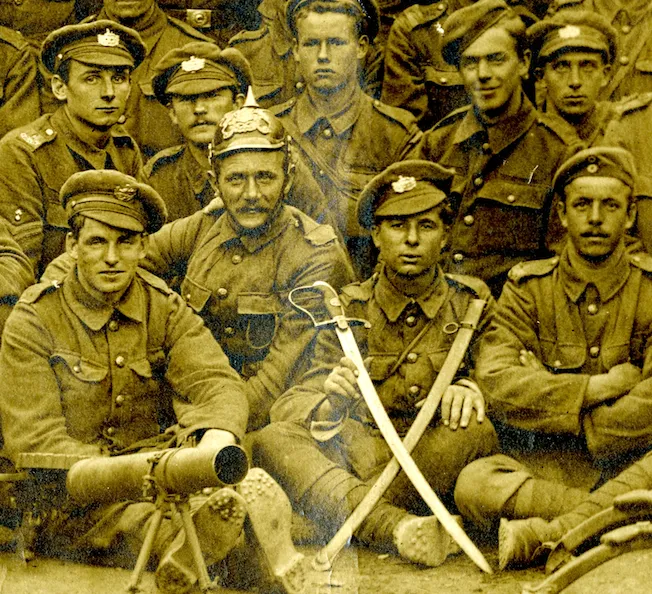
On 27 July the battalion was withdrawn for a well-deserved rest and marched in stages over the next few days to Franqueville via Aveluy, Bouzincourt, Hedeaville, Arqueves and Beauval. The War Diary states that Beauval was reached on 29 July, and it was here that Private Harold Beck later stated that the photograph was taken of “all the men that could parade”. After an early start Franqueville was reached by late morning the next day and a seven-day break from the line ensued. While the companies were reorganised and the usual training continued, the men would at last have found time to relax and write letters to their loved ones at home.
Only 77 men are seen in this Gloucestershire regiment photograph, which suggests a loss of perhaps 140 men over this period, although a small number could have been on other duties when the photographer appeared. A number show off captured German helmets and an officer’s sword, plus the prize of a Maxim machine gun that had been captured on 22 July.
Unnamed black soldier in WW1 Gloucestershire regiment
The faces are initially what one would expect from a typical English county regiment of the period, though with one exception. The black soldier sitting in front of Captain Castle is an unexpected reminder of the societal mix ‘back home’. At this stage of the war all men were volunteers and as a territorial unit the majority of the men here would have been pre-war, part-time, soldiers from Bristol who had signed up for overseas service in the first days of hostilities. They have all endured the horrors of the front-line, and all sit here as equals.
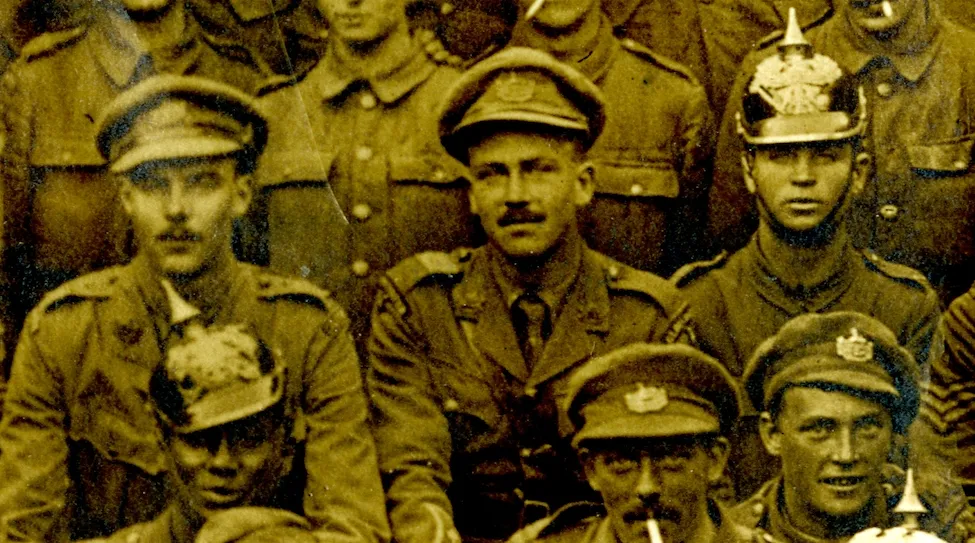
The photo remained in the possession of the family of one of the sitters, Sergeant William Taylor, until 1985 when, as a distant relation, it came into my possession. Sgt Taylor sits proudly in a stolen Pickelhaube German helmet next to 2/Lieutenant CF Holland, third row from the back, while Captain Gilbert Castle takes centre stage. Both Castle and Holland were later awarded the Military Cross for their actions over the preceding days.
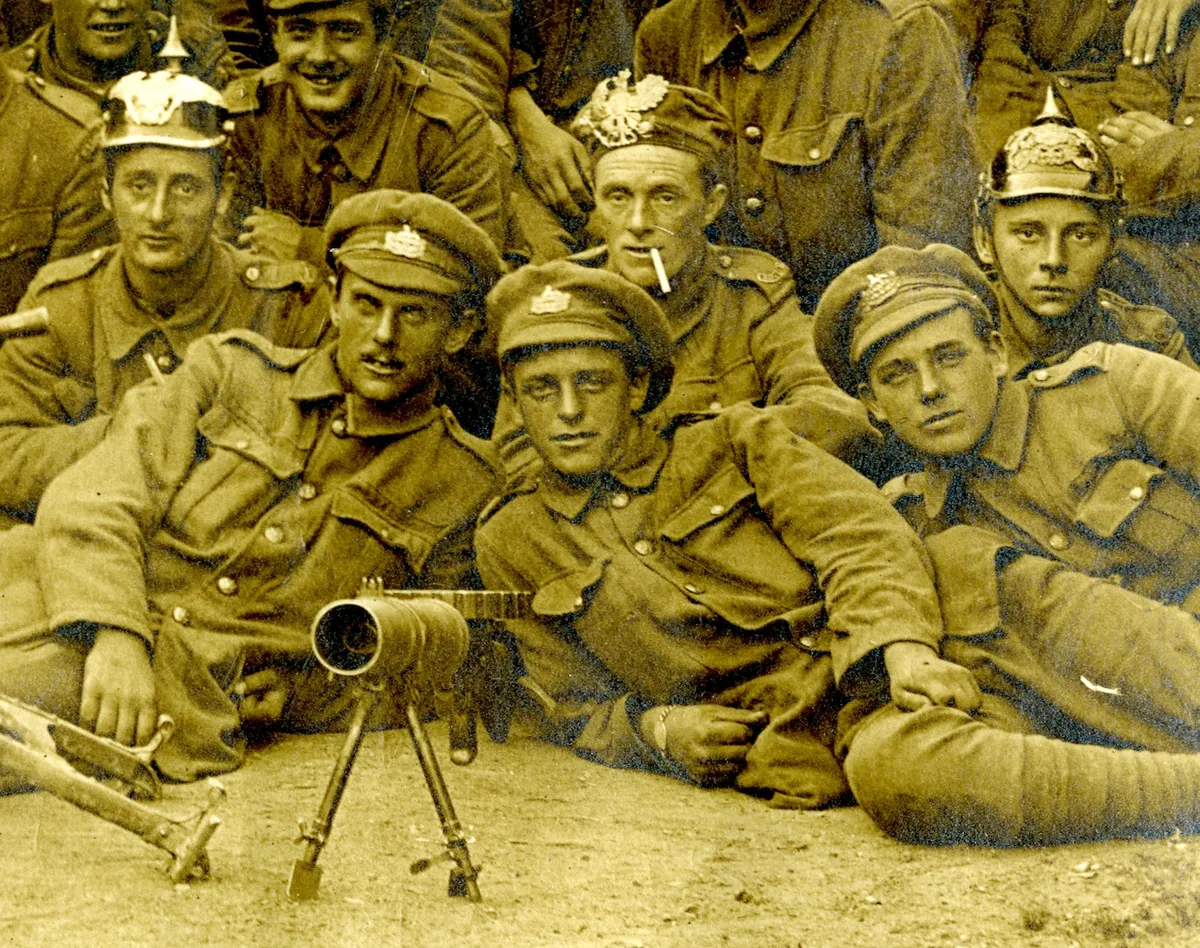
Only five other names are known: Pte Harold Beck, who is thought to be the soldier in the front row leaning on his left arm; Pte Henry Stevens lying next to him; Pte Edwin Vickarage, standing fourth row from the front, third from the left; Pte Edwin Wood, sitting third row from the front, extreme left. Pte Charles Bowyer sits somewhere in the second row behind the machine gun. Privates Bowyer and Stevens were to die before the war’s end.
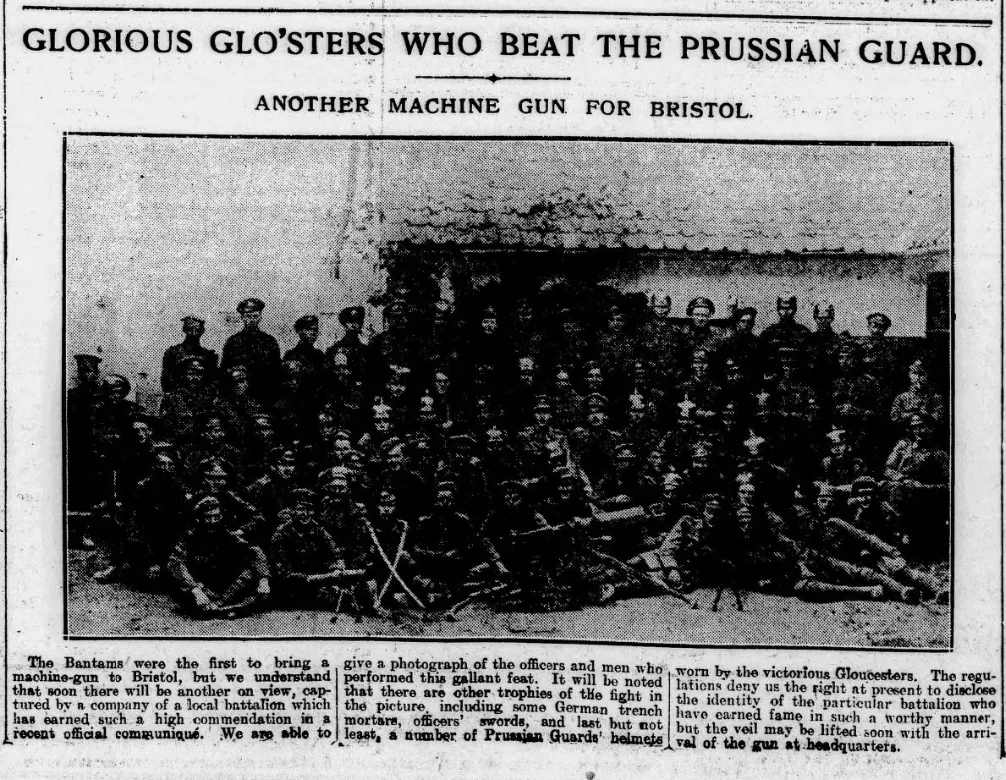
This same photograph was used by The Bristol Times and Mirror on 16 September 1916 to illustrate the endeavours of the ‘boys’ at the Front. Captioned ‘Glorious Glo'sters who beat the Prussian Guard’ no further details could be given and even the chalk placard was blanked out, for “The regulations deny us the right at present to disclose the identity of the particular battalion who have earned fame in such a worthy manner”.
After 108 years we can at long last attempt to name these brave men. Let us hope that it isn’t too late.
If you can identify any of the men in the photograph please email Ian on ian.chard@talktalk.net